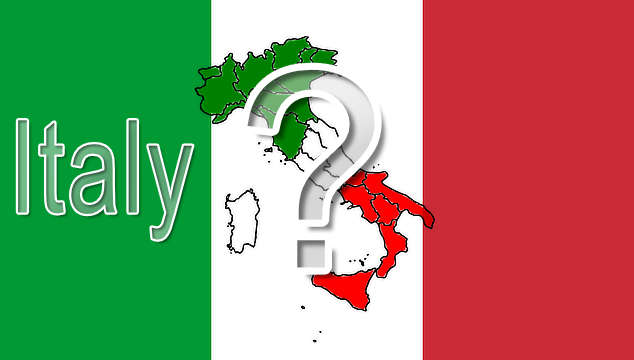It is a well-known fact that Italians have a tradition of taking a midday break called “siesta.” This practice has intrigued many, and people often wonder why Italians have embraced this custom. Siesta is not just a nap or a simple break; it holds historical and cultural significance in Italian society. Understanding the reasons behind this tradition provides insights into the Italian lifestyle and work culture. Siesta, derived from the Latin word “hora sexta,” meaning the “sixth hour,” refers to a period of rest or sleep taken in the early afternoon. Traditionally, a siesta involves pausing daily activities to relax and rejuvenate. Siesta has deep roots in Italian history and is an essential part of the Italian way of life. The historical origin of the siesta in Italy can be traced back to the agricultural practices and warm climate. In the past, Italians, particularly those living in rural areas, would take a break during the hottest part of the day to escape the scorching sun. The traditional lifestyle in Italy, characterized by slow-paced living and emphasis on family and leisure time, has contributed to the practice of siesta. Siesta offers several benefits, both physical and mental. Taking a break in the afternoon can help combat fatigue, improve cognitive function, and enhance overall well-being. It allows individuals to recharge their energy levels, reduce stress, and improve productivity and focus for the rest of the day. Several factors have influenced the practice of siesta in Italy. The country’s climate, with hot summers and high temperatures, creates an ideal environment for the midday break. Changes in lifestyle and work culture have also played a role in the evolution of siesta habits. With the advent of a more fast-paced and urban lifestyle, the practice of siesta has become less common in larger cities. Despite changes in habits, siesta is still preserved in small towns and rural areas, where the traditional Italian way of life is more prevalent. Local businesses may close for a few hours in the afternoon, giving people time to rest and spend time with family.
Why Do Italians Have Siesta?
Why Do Italians Have Siesta?
Italians have siesta, or midday nap, as a way to recharge and relax during the hottest part of the day. This tradition dates back to ancient times when people had to work in the fields and needed a break from the scorching heat. Italians have embraced this practice as an integral part of their culture, understanding the numerous benefits it brings to their well-being. Taking a short nap helps improve alertness, productivity, and overall mood, which is why Italians have incorporated it into their daily routine. Additionally, the siesta allows Italians to prioritize quality time with family and friends during the day, fostering stronger relationships. This long-standing siesta tradition is deeply rooted in the Italian lifestyle and significantly contributes to their balanced approach to work and leisure.
What is Siesta?
What is Siesta?
Siesta is a traditional practice in many Mediterranean countries, including Italy. It refers to a short nap or rest taken after the midday meal. Siesta is deeply ingrained in Italian culture and is seen as a way to recharge and escape the heat of the day. During siesta, businesses and shops often close, allowing people to relax and spend time with family. While siesta is not as common in modern times, it still holds cultural significance and is cherished by many Italians. Embracing siesta can be a way to prioritize self-care and find balance in today’s fast-paced world.
What Does Siesta Mean?
What Does Siesta Mean?
Siesta refers to a mid-day break or nap taken after a hearty lunch, commonly practiced in countries with warm climates like Italy and Spain.
The term “siesta” originates from the Latin word “hora sexta,” which means “sixth hour” or midday. During siesta time, stores and businesses often close, allowing people to rest and rejuvenate before continuing their day. This practice aligns with the Italian culture of prioritizing total wellness and enjoying life’s little pleasures. Taking a quick nap, indulging in gelato, or simply relaxing in a favorite chair are all ways Italians cultivate la dolce vita during siesta time.
How Is Siesta Traditionally Practiced?
How is Siesta Traditionally Practiced?
Siesta is traditionally practiced in Italy as a midday break to rest and recharge. Italians prioritize relaxation and leisure activities during this time, such as taking a nap, enjoying a hearty lunch, or engaging in recreational activities. In small towns and rural areas, where businesses may temporarily close, siesta is deeply ingrained in Italian culture and is especially prevalent. While the modern practice of siesta has changed in some areas, it continues to be preserved and valued as a way to enhance overall well-being and embrace the “la dolce vita” lifestyle.
Historical and Cultural Significance of Siesta in Italy
Discover the fascinating history and cultural significance of siesta in Italy! Uncover the origin of this cherished tradition and gain insight into how it has shaped the Italian lifestyle and work culture. Delve into the rich historical context and uncover the reasons behind why siesta has become an integral part of Italian society. Whether you’re an enthusiast of leisurely afternoon naps or simply intrigued by cultural customs, this section will shed light on the captivating world of siesta in Italy.
The Origin of Siesta in Italy
The origin of siesta in Italy can be traced back to historical and cultural factors. Italians have long embraced the concept of taking a midday break to rest and recharge. This practice can be linked to the traditional lifestyle and work culture of the country. In Italy, the origin of siesta can be found in the historical and cultural fabric of the nation. Italians have always valued the importance of taking a break during the day to relax and regain energy. This tradition originates from the past when Italians used to have substantial lunches, and taking a siesta afterward helped them digest the food and have a quick nap before returning to work. While the modern lifestyle and work culture have brought about changes in siesta habits in Italy, the siesta tradition is still preserved in small towns and rural areas. Despite these shifts, the origin of siesta in Italy remains deeply ingrained in the rich tapestry of Italian culture.
Traditional Lifestyle and Work Culture

Stop reading, start speaking
Stop translating in your head and start speaking Italian for real with the only audio course that prompt you to speak.
Traditional lifestyle and work culture in Italy play a significant role in the practice of siesta. Italians prioritize a work-life balance and place importance on incorporating a break in the middle of the day to rest and recharge. This cultural value is deeply ingrained in Italian society and is strongly influenced by historical traditions. Italians firmly believe that by taking a siesta, they can sustain their energy levels and maintain productivity throughout the day. This longstanding tradition exemplifies Italians’ appreciation for leisure and the simple joys of life. Understanding the significance of traditional lifestyle and work culture helps to explain why Italians have embraced the concept of siesta for generations.
The Benefits of Siesta
Siestas, a beloved tradition in Italy, offer a range of incredible benefits that go beyond just taking a nap. In this section, we’ll uncover the advantages of embracing the art of the siesta. From improved physical and mental well-being to enhanced productivity and focus, these siestas promise an array of rewards that will leave you eager to implement this mindful practice into your own daily routine. So, buckle up as we explore the remarkable benefits that await!
Physical and Mental Health Benefits
Taking a siesta in Italy can provide numerous physical and mental health benefits. Here is a comprehensive list of these advantages:
- Improved sleep: By taking a mid-day break, individuals can regulate their sleep-wake cycle, resulting in enhanced nighttime sleep quality.
- Stress reduction: Embracing a siesta allows for relaxation and rejuvenation, effectively reducing stress levels.
- Increased alertness: Napping can greatly improve cognitive function, memory retention, and overall alertness, thereby enhancing productivity throughout the day.
- Boosted creativity: Resting during the siesta period fosters creativity and enhances problem-solving abilities.
- Enhanced mood: Taking a break uplifts one’s mood and contributes to a profound sense of well-being.
These physical and mental health benefits significantly contribute to the overall wellness and quality of life experienced by Italians who regularly practice the siesta.
Increased Productivity and Focus
Increased productivity and focus are key benefits of practicing siesta. Taking a short break in the middle of the day allows Italians to recharge and refocus, leading to increased productivity and focus in their work. By stepping away from their tasks and resting, they are able to come back refreshed and energized for the rest of the day. This practice also helps prevent burnout and reduces the likelihood of making mistakes due to fatigue. Incorporating siesta into their daily routine helps Italians maintain their increased productivity and focus throughout the day.
Factors Influencing the Practice of Siesta
Discover the fascinating factors that shape the practice of siesta in Italy. From the influence of climate and daily schedules to the impact of modern lifestyle and work culture, we’ll uncover the reasons behind this cherished tradition. Get ready to dive into the connection between Italians and their afternoon rest, as we delve into the captivating interplay of cultural, environmental, and societal factors.
Climate and Daily Schedule
Climate and daily schedule are two key factors that significantly influence the practice of siesta in Italy. The warm Mediterranean climate, especially during the hottest periods of the day, makes it perfectly suited for people to rest and revitalize. Traditional Italian daily routines have long been tailored to accommodate this climate, with businesses and shops closing down during siesta time. This pause allows individuals to pause, unwind, and relish in activities such as savoring a satisfying lunch, taking a brief nap, or treating themselves to a delicious gelato. Nonetheless, the contemporary way of life and work culture have gradually impacted the siesta tradition with certain Italian retailers and fast food chains remaining open throughout the day. In order to preserve the cultural significance of this mid-day break and promote overall well-being, it becomes crucial to strike a harmonious balance between modern convenience and upholding the tradition of siesta.
Modern Lifestyle and Work Culture
In the modern Italian lifestyle and work culture, the practice of siesta has undergone some changes, particularly in larger cities.
- Busy schedules: With demanding work hours and busy lifestyles, many Italians find it challenging to take a mid-day break.
- Rise of fast food: The increase in fast food options has led to a shift towards quicker meals, reducing the need for a lengthy break.
- Changing work patterns: The rise of remote work and flexible schedules has allowed individuals to adapt their break times to better suit their needs.
- Preservation in smaller towns: In contrast, smaller towns and rural areas often still adhere to the traditional siesta practice, shutting down stores and businesses for a few hours in the afternoon.
Pro-tip: While the modern lifestyle and work culture may make it difficult to practice a traditional siesta, finding time for a short break can still provide mental and physical benefits, such as increased productivity and relaxation.
The Modern Practice of Siesta in Italy
Discover the fascinating world of siesta in Italy, where the modern practice of taking midday rest has evolved over time. Delve into the changing habits of siesta and how it is still preserved in small towns and rural areas. Uncover the cultural significance and benefits behind this cherished Italian tradition. Get ready to explore the unique aspects of siesta in Italy that have captivated locals and visitors alike. Get ready to uncover the secrets of Siesta in Italy!
Changes in Siesta Habits
Changes in siesta habits in Italy have been observed due to various factors. Urbanization and modern lifestyles have led to a decrease in the traditional practice of taking a midday break. Italian retailers and businesses have adapted to a faster-paced society, with stores staying open during what used to be siesta time. However, despite these changes, there are still pockets of Italy, particularly in small towns and rural areas, where the traditional siesta culture is preserved. In these places, you can still find shops and businesses closing for a few hours in the afternoon, allowing people to rest and rejuvenate before continuing their day.
Preservation of Siesta in Small Towns and Rural Areas
The preservation of siesta in small towns and rural areas in Italy is a testament to the traditional Italian way of life and their commitment to rest and relaxation. In these areas, businesses still close during siesta time, allowing locals to take a break from their daily activities. The preservation of siesta in small towns and rural areas demonstrates the importance of preserving this cultural practice. It is essential for both locals and visitors alike to respect and understand the cultural significance of the preservation of siesta in small towns and rural areas. By embracing this tradition, individuals can lead a more fulfilling and balanced lifestyle, honoring the preservation of siesta in small towns and rural areas.


.jpg)


